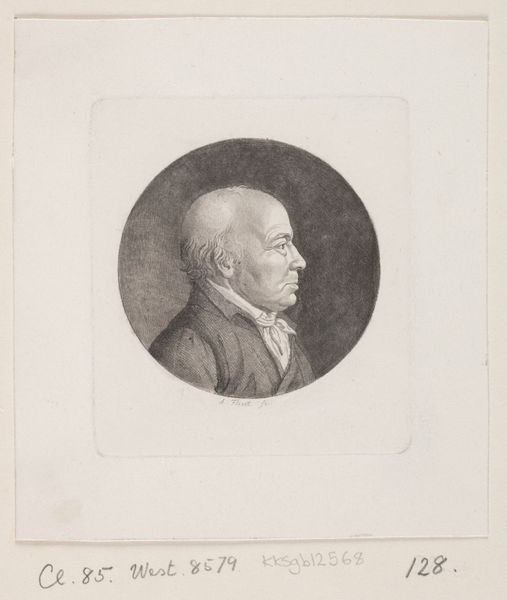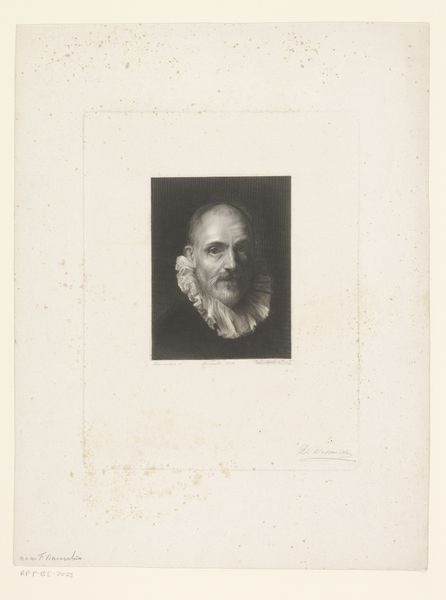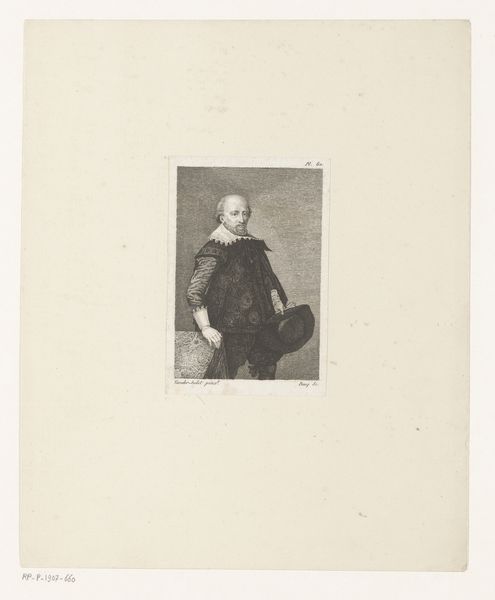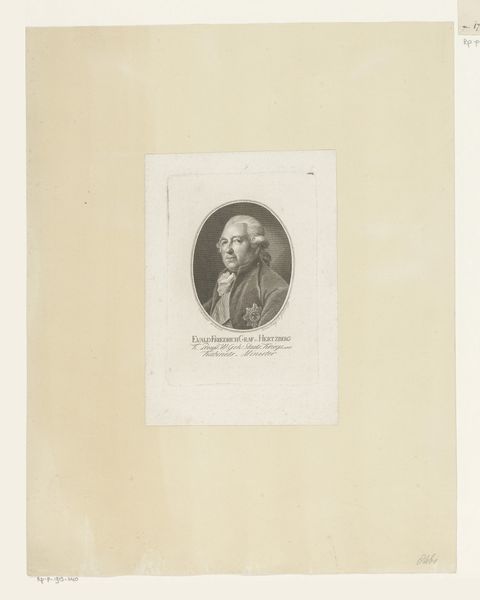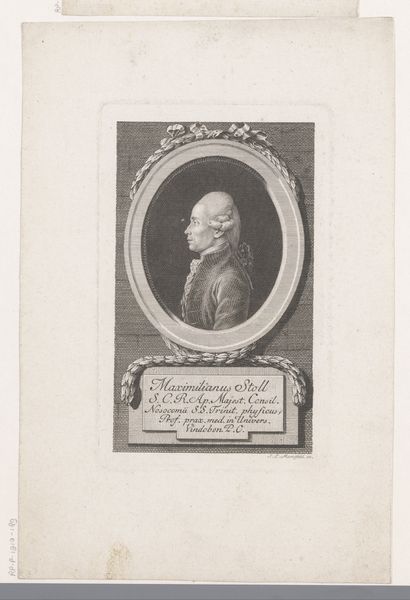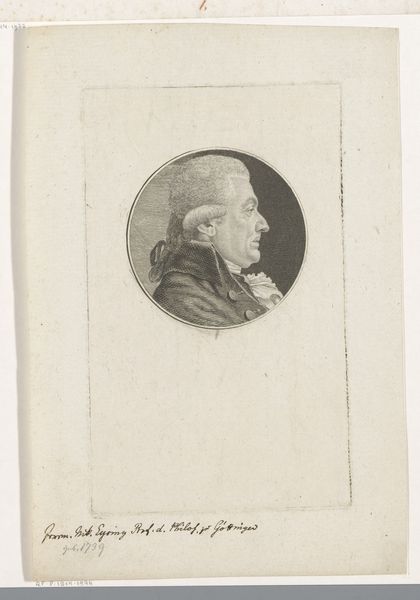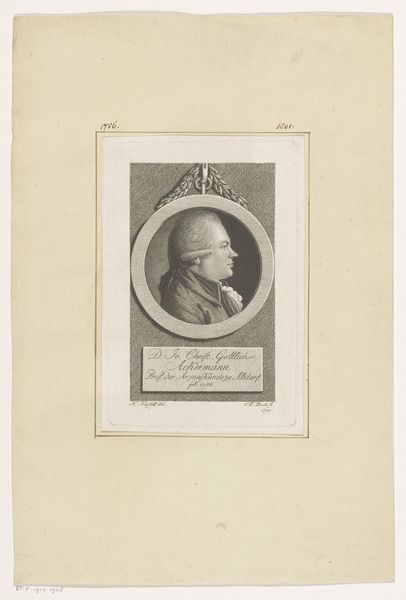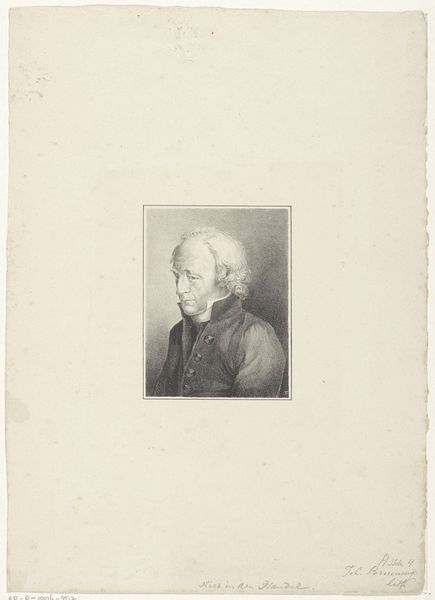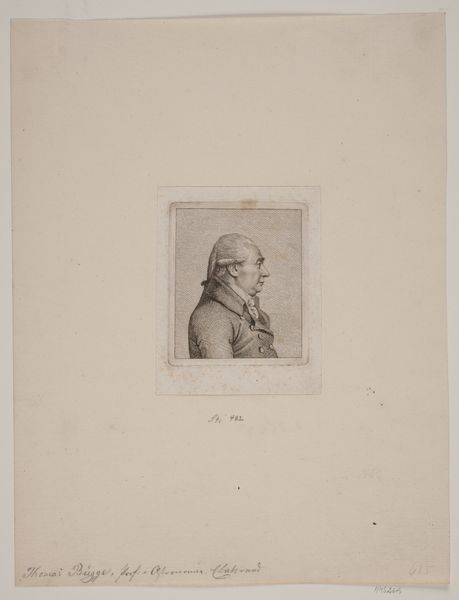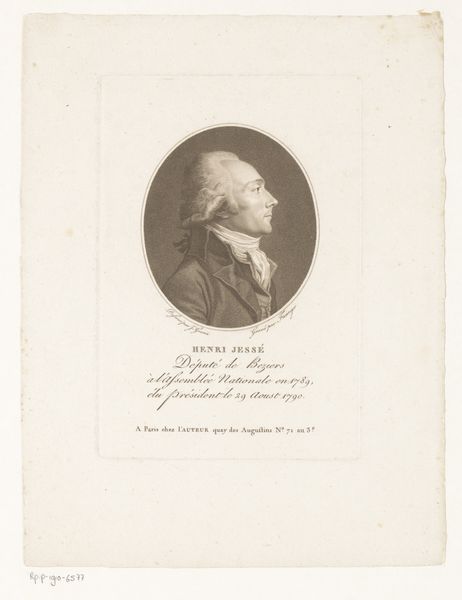
Dimensions: height 180 mm, width 144 mm
Copyright: Rijks Museum: Open Domain
Curator: This print is titled "Portret van Emanuel Desvalles de Poal" created by Jakob Matthias Schmutzer somewhere between 1743 and 1811. It’s an engraving, and the style definitely leans into the Baroque tradition. Editor: Immediately, I see such a concentrated study in aging and introspection. The almost monochrome palette accentuates every wrinkle, every line etched by time. It feels very…somber. Curator: Yes, the somber mood seems typical for many portraits from that era, intended to project seriousness and status. Looking at Schmutzer, his prints often circulated within elite social networks, solidifying reputations. The placement and accessibility of such images mattered a great deal. Editor: Absolutely. Considering Desvalles de Poal, whose portrait this is, it is worth examining who has access to these images, who controls them, and whose narrative prevails? I mean, why him, specifically? What power structures are at play here? It is more than just historical documentation; it is active construction of the collective memory. Curator: Those are insightful questions. It goes beyond pure representation to consider how portraits contributed to shaping socio-political hierarchies. Baroque art, while visually opulent, also reinforces social divisions, so you raise critical questions that should always be a part of its discussion. Editor: Indeed. And the almost palpable weight of the gaze… I can’t shake the feeling of vulnerability intertwined with the subject’s status. There’s something deeply human in that tension between presentation and perceived emotion, a powerful statement about aging and power. Curator: That vulnerability, I believe, offers us a deeper understanding of the person portrayed. It highlights the complex relationship between individuals and the historical forces at play around them, giving space to re-interpret both artwork and subject with updated insights. Editor: So, stepping back, considering both the technical prowess and socio-historical impact… it encourages conversations about representation, identity, and legacy beyond mere appreciation of Baroque style. Curator: Precisely. It underscores art’s potential to serve not just as documentation but as a catalyst for crucial dialogues about our world.
Comments
No comments
Be the first to comment and join the conversation on the ultimate creative platform.
